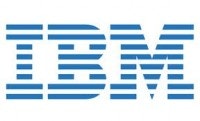First there was Deep Blue, then Watson, and now… SyNAPSE? International Business Machines Corp. (NYSE:IBM) scientists revealed last week that they’d developed a nanofluidic circuit, which is a fancy term for a transistor which operates in ways that mimic the human brain. This is huge news on two fronts: it not only opens up new potential applications for artificial intelligence, it also offers the possibility of finally breaking free of Moore’s Law as transistors continue to approach the scale of individual atoms.

Let’s back up and explain some of these terms in more detail. SyNAPSE, a backronym of “Systems for Neuromorphic Adaptive Plastic Scalable Electronics,” is actually a DARPA program that was initiated to develop brain-like computers. International Business Machines Corp. (NYSE:IBM) has taken the lead on this project, but research teams from several top universities, as well as HRL Laboratories — a jointly-owned research arm of General Motors Company (NYSE:GM) and The Boeing Company (NYSE:BA) — have also contributed to the project. IBM introduced “cognitive computer chips” in late 2011 as part of the SyNAPSE program, but last week’s nanofluidic advancement hasn’t been officially mentioned in conjunction with that program. That doesn’t mean it won’t make an ideal technological adaptation to push SyNAPSE further forward.
The nanofluidic circuit was described by bothThe Atlantic Wire:
The new so-called nanofluidic circuit works a little bit like a network of streams. A charged fluid moves over the surface of the circuit changing its properties (e.g. flipping a switch “on” or “off”) with the positively and negatively charged atoms in the fluid. Like the synapses of the brain, the ions operate in three dimensions, a game changer in terms of efficiency and uncharted territory in terms of computing.
And by The New York Times‘ tech blog:
The advantage of the new method is that it is both nonvolatile — it requires only a small amount of electricity to change the materials from one state to another, and they then remain in that state — and is potentially reversible, meaning that it could be used to build a device like a transistor. …
“We could form or disrupt connections just in the same way a synaptic connection in the brain could be remade, or the strength of that connection could be adjusted,” [IBM Fellow] Dr. [Stuart] Parkin said.
Efficiency would be the key advancement here in terms of chip making. The reason why ARM Holdings plc (ADR) (NASDAQ:ARMH) has long dominated mobile processor architecture has to do with its early lead in terms of energy efficiency. Battery life has always been a limiting factor in mobile computing, and any chip design that can minimize battery drain without sacrificing performance is likely to be in high demand. Parkin followed up with VentureBeat after International Business Machines Corp. (NYSE:IBM) published the paper on this nanofluidic process in Science:
We are using tiny currents of ions of atoms generated by these electrical signals to change the state of matter of this oxide material. It is a means to build low-energy, highly efficient devices by turning on and off their conducting state. We turn this material into a metal and maintain it without any need to supply power.
Today’s chips operate at a constant voltage, although they may not be using all it at any given time. Reducing or otherwise routing around this demand would understandably be a big improvement, and would result in a big shake-up in the ranks of mobile chip makers. International Business Machines Corp. (NYSE:IBM) would be more likely to license this innovation than it would be to develop the hardware itself, but if ARM can build a multibillion-dollar market cap on licensed chip designs, it stands to reason that International Business Machines Corp. (NYSE:IBM) has ample opportunity here as well.
It’s also an exciting step forward for brain-like computing — or a scary step forward, if you fear the eventual obsolescence of our fantastic but flawed fleshy brains. Computers can’t mimic all the wild, unexpected, creative mysteries of the human brain, which has kept most of us gainfully employed so far. What will happen to us when that’s no longer the case?
The article IBM Takes Another Step Toward a Post-Human World originally appeared on Fool.com and is written by Alex Planes.
Fool contributor Alex Planes holds no financial position in any company mentioned here. Add him on Google+ or follow him on Twitter @TMFBiggles for more insight into markets, history, and technology.The Motley Fool recommends General Motors. The Motley Fool owns shares of International Business Machines (NYSE:IBM).
Copyright © 1995 – 2013 The Motley Fool, LLC. All rights reserved. The Motley Fool has a disclosure policy.


